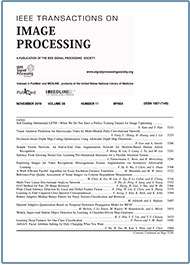Predicting the Quality of Images Compressed After Distortion in Two Steps
Top Reasons to Join SPS Today!
1. IEEE Signal Processing Magazine
2. Signal Processing Digital Library*
3. Inside Signal Processing Newsletter
4. SPS Resource Center
5. Career advancement & recognition
6. Discounts on conferences and publications
7. Professional networking
8. Communities for students, young professionals, and women
9. Volunteer opportunities
10. Coming soon! PDH/CEU credits
Click here to learn more.
Predicting the Quality of Images Compressed After Distortion in Two Steps
In a typical communication pipeline, images undergo a series of processing steps that can cause visual distortions before being viewed. Given a high quality reference image, a reference (R) image quality assessment (IQA) algorithm can be applied after compression or transmission. However, the assumption of a high quality reference image is often not fulfilled in practice, thus contributing to less accurate quality predictions when using stand-alone R IQA models. This is particularly common on social media, where hundreds of billions of user-generated photos and videos containing diverse, mixed distortions are uploaded, compressed, and shared annually on sites like Facebook, YouTube, and Snapchat. The qualities of the pictures that are uploaded to these sites vary over a very wide range. While this is an extremely common situation, the problem of assessing the qualities of compressed images against their pre-compressed, but often severely distorted (reference) pictures has been little studied. Towards ameliorating this problem, we propose a novel two-step image quality prediction concept that combines NR with R quality measurements. Applying a first stage of NR IQA to determine the possibly degraded quality of the source image yields information that can be used to quality-modulate the R prediction to improve its accuracy. We devise a simple and efficient weighted product model of R and NR stages, which combines a pre-compression NR measurement with a post-compression R measurement. This first-of-a-kind two-step approach produces more reliable objective prediction scores. We also constructed a new, first-of-a-kind dedicated database specialized for the design and testing of two-step IQA models. Using this new resource, we show that two-step approaches yield outstanding performance when applied to compressed images whose original, pre-compression quality covers a wide range of realistic distortion types and severities. The two-step concept is versatile as it can use a...
SPS ON X
- THIS WEEK: Join NASA’s Dr. Jacqueline Le Moigne as she shares her journey through academia, the private sector, and pivotal roles at NASA, emphasizing her work in signal processing, computer vision, and related technologies. Register now! https://x.com/IEEEsps/status/1785057479606288505
- Join NASA’s Dr. Jacqueline Le Moigne for this interactive webinar as she shares her journey through the realms of signal processing, computer vision, and related technologies, including her pivotal roles at NASA. https://x.com/IEEEsps/status/1782468413551423536
- Great crowd at the Student Job Fair at #ICASSP2024! Thank you to our sponsors for furnishing an exciting, engaging event! https://x.com/IEEEsps/status/1780817453569687559
- Thank you to our Women in Signal Processing Luncheon panelists for their wisdom and insights during today’s event at #ICASSP2024! https://x.com/IEEEsps/status/1780458637338530252
- Free Machine Learning (ML) Lecture Series from IEEE SPS From basics to recent advances, unlock the secrets of ML with Prof. Sergios Theodoridis! https://x.com/IEEEsps/status/1779931297093222415












